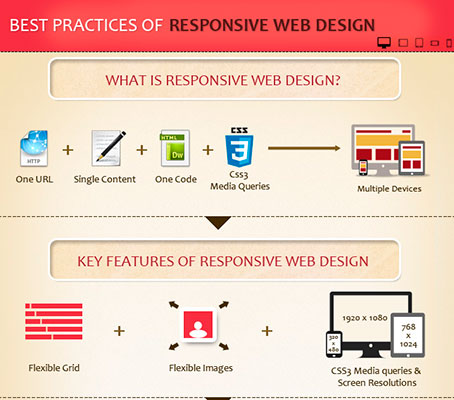Important Website Design Insights: Suggestions For Developing An User-Friendly Interface
Important Website Design Insights: Suggestions For Developing An User-Friendly Interface
Blog Article
Writer-McKnight Secher
When it comes to web site design, making sure user-friendliness is essential. From responsive layout to structured navigating, every element plays an important role in creating a site that deals with your target market's needs. Yet what regarding the better information that can make or break a user's searching experience? Stay tuned as we reveal some often-overlooked pointers that can elevate your website's functionality to the next level, making it absolutely stick out in the digital landscape.
Importance of Responsive Style
Responsive design is a crucial facet of contemporary web site growth. Ensuring your web site is responsive ways that it can adapt to different screen sizes and gadgets, providing a smooth experience for individuals.
With the raising use mobile phones and tablet computers to access the internet, having a responsive layout is important for reaching a bigger target market. It assists in improving customer experience by making your web site easy to navigate and keep reading any type of gadget.
Furthermore, receptive layout can positively influence your online search engine positions, as search engines like Google prioritize mobile-friendly sites. By having a responsive layout, you're also future-proofing your site, as new gadgets with differing display sizes continue to arise.
Simplify Navigation Structure
To improve individual experience and assist in easy accessibility to details on your site, streamlining the navigating structure is vital. When developing your website, concentrate on developing a clear and instinctive navigating food selection that aids visitors locate what they're trying to find swiftly.
Limit the variety of food selection items to the essentials, grouping related web pages together to avoid overwhelming users. Usage detailed tags that clearly suggest the content of each page, making it easier for users to comprehend where each link will certainly take them.
Consider implementing dropdown menus for subcategories to stop littering the main navigating bar. Additionally, include a search bar plainly on the page for individuals that prefer looking for particular details.
Focus on mobile responsiveness in your navigation style to make certain easy access on all gadgets.
Enhance Page Load Speed
Improving page load speed is critical for retaining visitors on your web site. Slow-loading pages irritate users and can cause high bounce prices. To maximize web page tons rate, start by maximizing images. Press images without jeopardizing top quality to lower their documents dimensions.
Additionally, allow browser caching to save often accessed resources locally, speeding up tons times for returning site visitors. read on , JavaScript, and HTML files by getting rid of unneeded personalities, remarks, and formatting, improving lots speed.
Consider making use of a content delivery network (CDN) to disperse your site's web content throughout several servers worldwide, reducing latency for customers accessing your website from various locations. Lastly, limit making use of third-party manuscripts and plugins, as they can considerably affect load times.
Conclusion
In conclusion, by incorporating responsive layout, simplifying navigation, and maximizing page load rate, you can develop an user-friendly website that appeals to a larger target market and improves user experience. These essential elements make sure that site visitors can quickly gain access to and navigate your site across different devices, bring about increased engagement and satisfaction. By concentrating on https://www.fool.com/the-ascent/small-business/email-marketing/articles/edm-marketing/ , you can construct an effective web site that maintains users coming back for more.
